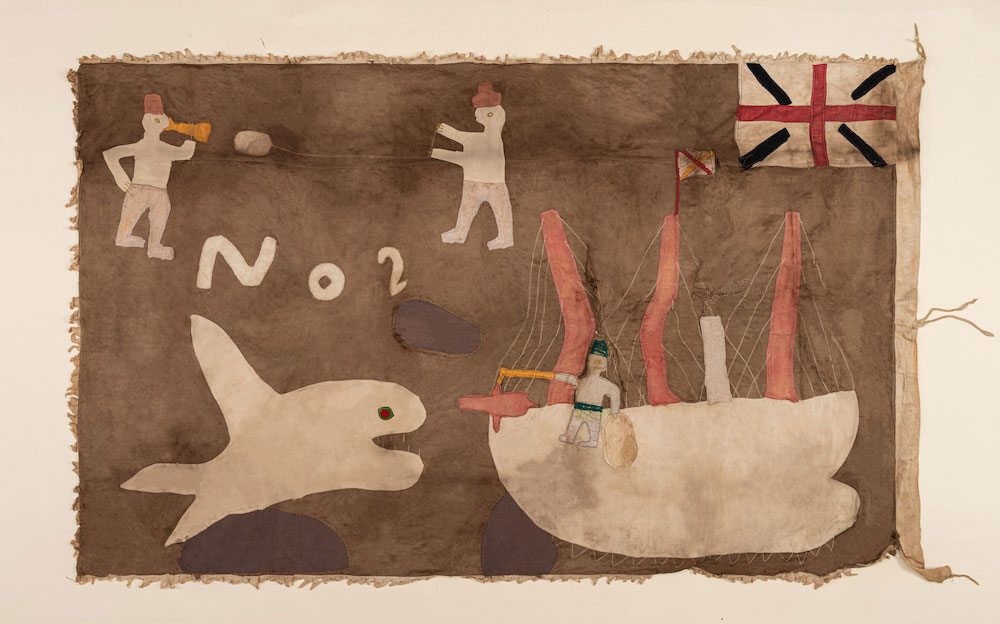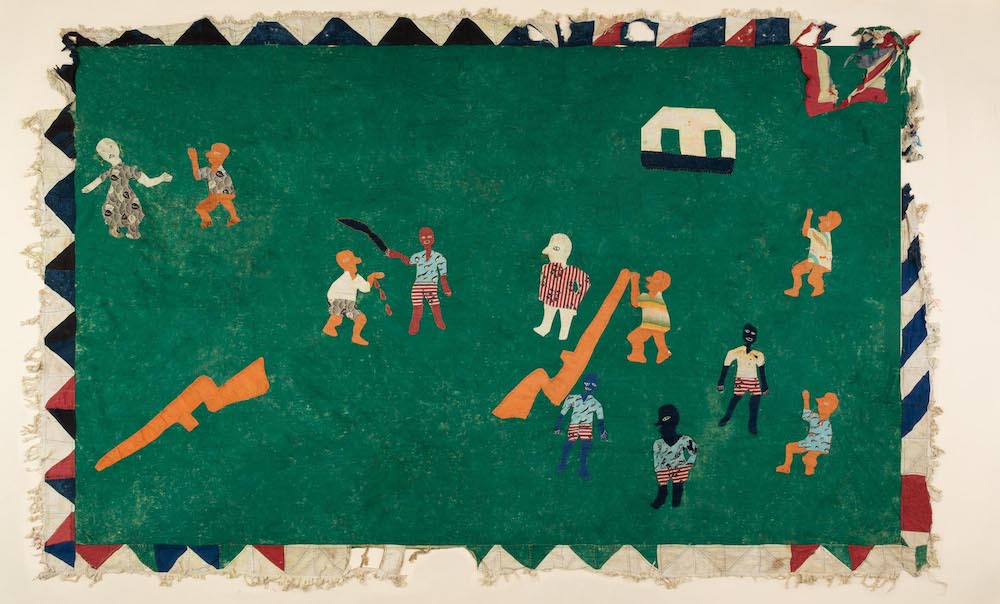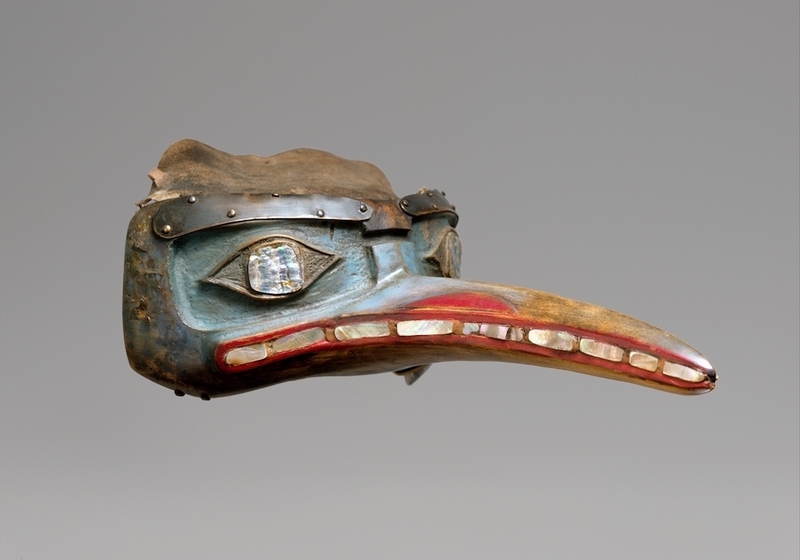Collector Karun Thakar has shared his collection of over 250 Asafo flags that he had found during his trips to Ghana in the 90s. Textiles and their fragments were restored and digitized for an online exhibition. We have highlighted some of the most interesting artifacts from the collection.
Between 1471 and 1828, various European countries built trading settlements along the coastal territories of Ghana where the Asante and Fante peoples of the linguistic and ethnic Akan group lived. At the peak of the slave trade in the late 17th and early 18th centuries, among the Fante people the first Asafo associations emerged—military associations with complex social and political structures created to protect people from abduction and to ensure the safety of local communities. Within these groups, a special kind of visual art was developed: frankaa flags with drawings depicting historical episodes, folk proverbs, messages to enemies, or even local anecdotes. These objects became a symbol of resistance during the period of the slave trade, and later were used to showcase the power, authority, and wealth of local competing groups.
Each divisiondivisionBrodie Cruickshank, Eighteen Years on the Gold Coast of Africa Including an Account of the Native Tribes, and Their Intercourse with Europeans, 1966 ed. (London: Cass & Co., 1853), vol. I, p. 245. had a leader, an advisor, a flag-bearer, and a drummer. Today, the main role of the flag-bearer is to dance with the object during parades and festivals, but in the past he and the guards had to defend the artifact from opponents at all costs. The flags were ordered by Asafo officials individually from professional craftsmen. Each company believed that it had ownership of certain designs and colors on its flags. Common motives included images of weapons, episodes of military clashes, and figures of animals (for example, lions, crocodiles, and scorpions), which were used to scare off potential offenders.
There are approximately three periods in the development of this African art. Early flags depicted a small Union Jack in the left corner or a simplified version of it, consisting of several multi-colored lines.
The period from 1910 to 1957 is considered a golden age in the development of this textile art. In small towns, special workshops arose in which several generations of artists could work.
After Ghana gained independence in 1957, a new Black Star flag replaced the British flag as a symbol of African emancipation and unity in the fight against colonialism. The background uses a wide range of colors and text components, such as the number or name of a representative of the company that ordered the textile product.
Flags still play an important public role in Fante villages. They can often be seen at annual festivals, funeral processions, and other events. Additional information about this textile art can be found on Instagram.
































